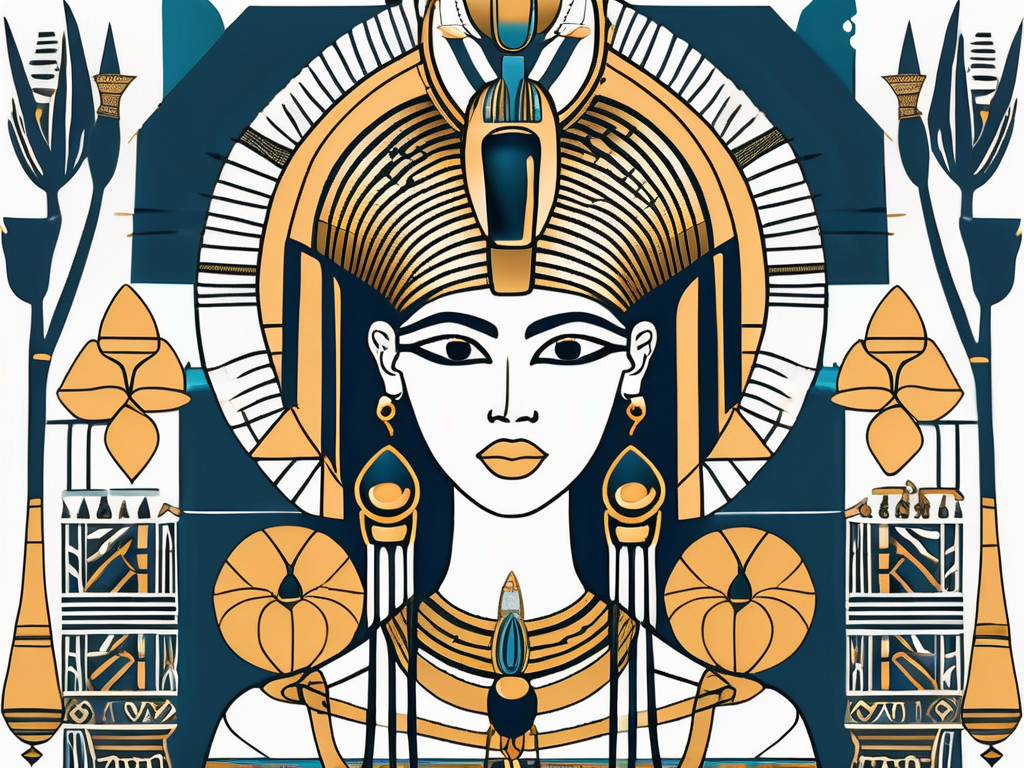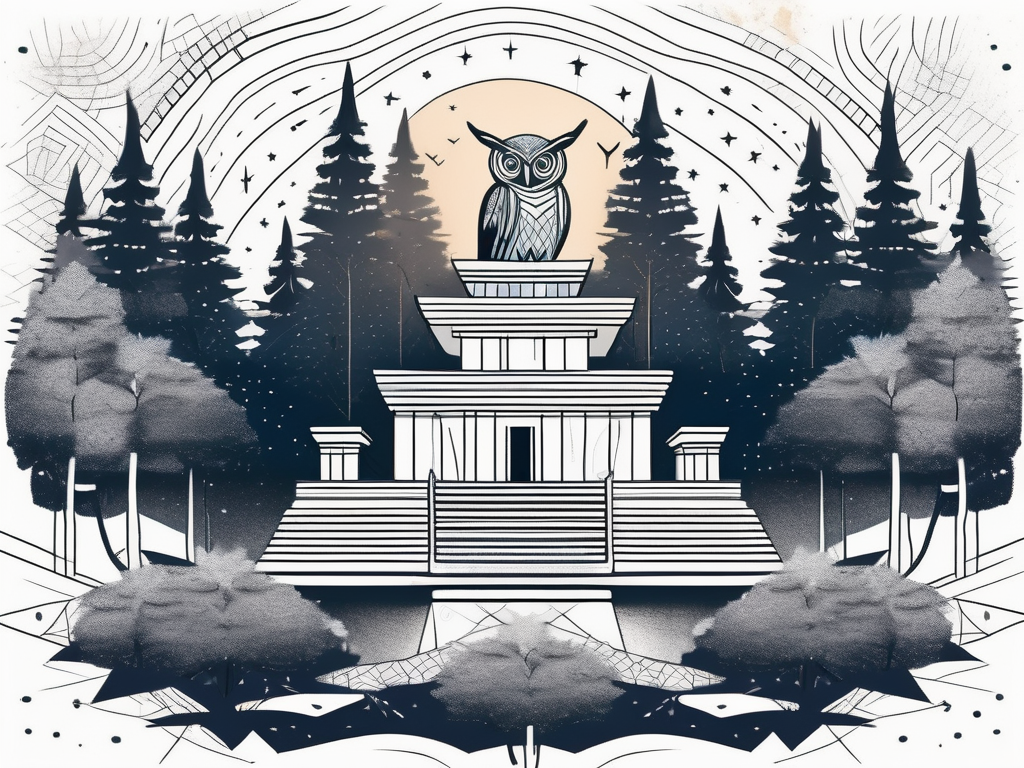Have you ever wondered about the ancient Egyptian gods and their significance in their unique culture? One deity that has often been overshadowed by the more well-known gods is Mafdet. In this article, we will delve into the mysteries surrounding Mafdet and shed light on the intriguing role this Egyptian god played in their mythology, religion, and culture.
Understanding the Role of Mafdet in Ancient Egyptian Mythology
When exploring the ancient Egyptian gods, it is essential to grasp the significance each deity held. Mafdet, sometimes depicted as a feline or as a woman with a feline head, was known as the goddess of protection and justice. Her stories and symbolism offer a fascinating insight into the beliefs and principles upheld by the ancient Egyptians.
According to ancient Egyptian mythology, Mafdet played a crucial role in maintaining order and balance in the world. As the goddess of protection, she was responsible for safeguarding not only the pharaoh but also the entire Egyptian society. Mafdet’s presence was believed to ward off any potential threats or dangers that could disrupt the harmony of the kingdom.
Mafdet’s Symbolism and Iconography
In ancient Egyptian art, Mafdet often appeared as a feline with sharp claws to symbolize her role as a protector of the pharaoh and the people. She embodied swift retribution against those who dared to bring harm to others. This symbolism highlights the importance the ancient Egyptians placed on justice and the maintenance of order within their society.
Moreover, Mafdet’s depiction as a woman with a feline head also carried symbolic meaning. The fusion of human and animal features represented the connection between the divine and the earthly realms. It signified Mafdet’s ability to bridge the gap between the mortal world and the realm of the gods, allowing her to effectively carry out her duties as a protector and enforcer of justice.
Furthermore, Mafdet’s association with the feline form also linked her to the concept of divine guardianship. Cats were highly revered in ancient Egypt and were often seen as protectors against evil and malicious spirits. Thus, Mafdet’s portrayal as a feline goddess reinforced her role as a guardian deity.
Mafdet’s Role in Egyptian Religion
Mafdet held a significant place in the religious beliefs of the ancient Egyptians. She was believed to accompany the pharaohs in the afterlife, ensuring their safe journey and protecting them from any harm or evil spirits. This association with the afterlife emphasized her importance and established her as a crucial figure in the religious and spiritual realm.
Furthermore, Mafdet’s role extended beyond the pharaohs. She was also invoked by ordinary individuals seeking protection and justice. People would offer prayers and make offerings to Mafdet, seeking her assistance in times of trouble or when facing injustice. Her presence in the lives of the common people reinforced the belief that justice and protection were accessible to all, regardless of social status or rank.
It is important to note that Mafdet’s influence was not limited to the mortal realm. She was also revered as a powerful deity in the divine pantheon. Her presence among the gods further solidified her status as a force to be reckoned with, capable of wielding immense power and authority.
In conclusion, Mafdet’s role as the goddess of protection and justice in ancient Egyptian mythology was of great significance. Her symbolism as a feline and her association with divine guardianship highlighted the ancient Egyptians’ belief in the importance of order and the need for protection against evil forces. Mafdet’s role in Egyptian religion, both in the mortal realm and the afterlife, showcased her power and influence as a deity.
The Historical Context of Mafdet Worship
As with many ancient Egyptian gods, the worship of Mafdet evolved over time. Her image and role in society underwent notable changes, reflecting the cultural shifts that took place throughout Egypt’s history.
The worship of Mafdet can be traced back to the early dynastic period of ancient Egypt, around 3100 BCE. During this time, she was primarily revered as a fierce feline deity, symbolizing her role as a protector and guardian. The ancient Egyptians believed that Mafdet had the power to ward off evil spirits and protect the pharaoh and the kingdom from harm.
Over the centuries, Mafdet’s image began to transform, taking on more human-like features. This shift in representation can be attributed to the changing religious beliefs and practices of the ancient Egyptians. As society became more complex, the people sought a deity who could not only protect them but also understand their human experiences.
By the Middle Kingdom period (2055-1650 BCE), Mafdet started to be depicted as a woman with the head of a feline. This hybrid form emphasized her connection to both the animal kingdom and the divine. It was believed that Mafdet possessed the agility and strength of a feline, making her an even more formidable protector.
The Evolution of Mafdet’s Image Over Time
Originally, Mafdet was primarily depicted as a fierce feline with sharp claws, embodying her protective nature. However, as the centuries passed, her image transformed, taking on more human-like features. Mafdet began to be portrayed as a woman with the head of a feline, highlighting her connection to both the animal kingdom and the divine.
These changes showcase how the ancient Egyptians’ perception of Mafdet’s character and role expanded and developed over time. She became more relatable to the people while retaining her divine attributes.
During the New Kingdom period (1550-1070 BCE), Mafdet’s popularity reached its peak. She was often depicted in temple reliefs and amulets, emphasizing her importance in the religious and spiritual lives of the ancient Egyptians. People would offer prayers and make offerings to Mafdet, seeking her protection and guidance.
Mafdet’s Influence on Later Egyptian Deities
Mafdet’s significance extended beyond her individual worship. As the ancient Egyptian pantheon evolved, her influence could be seen in other prominent deities. For example, the goddess Bastet, often depicted as a lioness or a domestic cat, inherited many of Mafdet’s attributes as a protector and guardian of pharaohs.
Bastet, who rose to prominence during the Third Intermediate Period (1070-712 BCE), became closely associated with Mafdet. The ancient Egyptians believed that both deities worked together to safeguard the pharaoh and the kingdom from any threats. Bastet, like Mafdet, was believed to possess the power to ward off evil and bring prosperity and fertility to the land.
This link between Mafdet and later deities demonstrates the lasting impact and reverence the ancient Egyptians held for her, even as new gods emerged in their religious practices. Mafdet’s legacy can be seen in the continued worship and veneration of feline deities throughout ancient Egyptian history.
Mafdet’s Significance in Ancient Egyptian Culture
Mafdet’s influence extended beyond mythology and religion. She played a vital role in various aspects of ancient Egyptian culture and can be found represented in their literature and artistic works.
The ancient Egyptians held Mafdet in high regard, recognizing her as a powerful and protective deity. She was often invoked for her assistance in defending against evil or in achieving justice. Numerous ancient Egyptian texts and inscriptions make mention of Mafdet and her abilities, providing valuable insights into the ancient Egyptians’ belief in her power and their reliance on her for protection.
These written accounts not only reveal the significance of Mafdet in ancient Egyptian culture but also shed light on the daily lives and rituals of the people who worshipped her. Through these texts, we gain a deeper understanding of the ancient Egyptians’ spiritual practices and their unwavering faith in the divine protection offered by Mafdet.
Furthermore, Mafdet’s image can be found carved into temple walls and depicted in various artifacts. These artistic representations further highlight her significance in ancient Egyptian culture. They offer glimpses into the artistic skills of the ancient Egyptians and provide a visual representation of their devotion to Mafdet.
When examining these artistic depictions, we can observe the intricate details and symbolism associated with Mafdet. She is often portrayed as a feline or as a woman with the head of a feline, emphasizing her connection to protection and ferocity. These artistic representations not only serve as a testament to the ancient Egyptians’ artistic abilities but also provide a tangible link to their beliefs and cultural practices.
Mafdet’s Role in Death and Afterlife Beliefs
As mentioned earlier, Mafdet played an essential role in the afterlife beliefs of the ancient Egyptians. Her presence ensured the safe passage of the pharaohs into the next life. The ancient Egyptians believed that Mafdet would protect the pharaohs’ souls during the crucial transition from the earthly realm to the realm of the gods.
This belief in Mafdet’s protection during the journey to the afterlife underscores the ancient Egyptians’ deep-rooted concern for the preservation of their souls. It reflects their understanding of the importance of a smooth transition into the realm of the gods and their unwavering faith in Mafdet’s ability to safeguard their souls.
Mafdet’s role in the afterlife beliefs of the ancient Egyptians also highlights their complex and intricate funerary practices. The ancient Egyptians meticulously prepared the bodies of the deceased and performed elaborate rituals to ensure a successful journey into the afterlife. Mafdet’s presence in these rituals and beliefs served as a source of comfort and reassurance for the ancient Egyptians, providing them with the hope of a peaceful and protected existence in the realm of the gods.
The Modern Perception of Mafdet
Today, Mafdet’s name and significance may not be as widely recognized as other Egyptian deities. However, her legacy persists, leaving traces of her presence in modern culture and Egyptology.
Mafdet’s Presence in Modern Pop Culture
Elements of ancient Egyptian mythology, including gods like Mafdet, continue to captivate modern audiences and inspire various forms of media and entertainment. Whether it be in literature, films, or even video games, the gods of ancient Egypt, including Mafdet, find new life and recognition among enthusiasts.
The Legacy of Mafdet in Contemporary Egyptology
Despite being less prominent than some of her counterparts, Mafdet remains an intriguing character within the field of Egyptology. Researchers and scholars continue to study her mythology, symbolism, and influence, shedding light on her role in ancient Egyptian society and expanding our understanding of their rich cultural heritage.
In Conclusion
Mafdet, the Egyptian god of protection and justice, offers a captivating glimpse into the complex world of ancient Egyptian mythology. From her symbolism and role in religion to her significance in art and literature, Mafdet’s story is a reflection of the values and beliefs held by the people of ancient Egypt. Unveiling the mysteries of Mafdet reveals not only the intricate web of deities in their pantheon but also the enduring importance of protection and justice in human societies throughout history.












